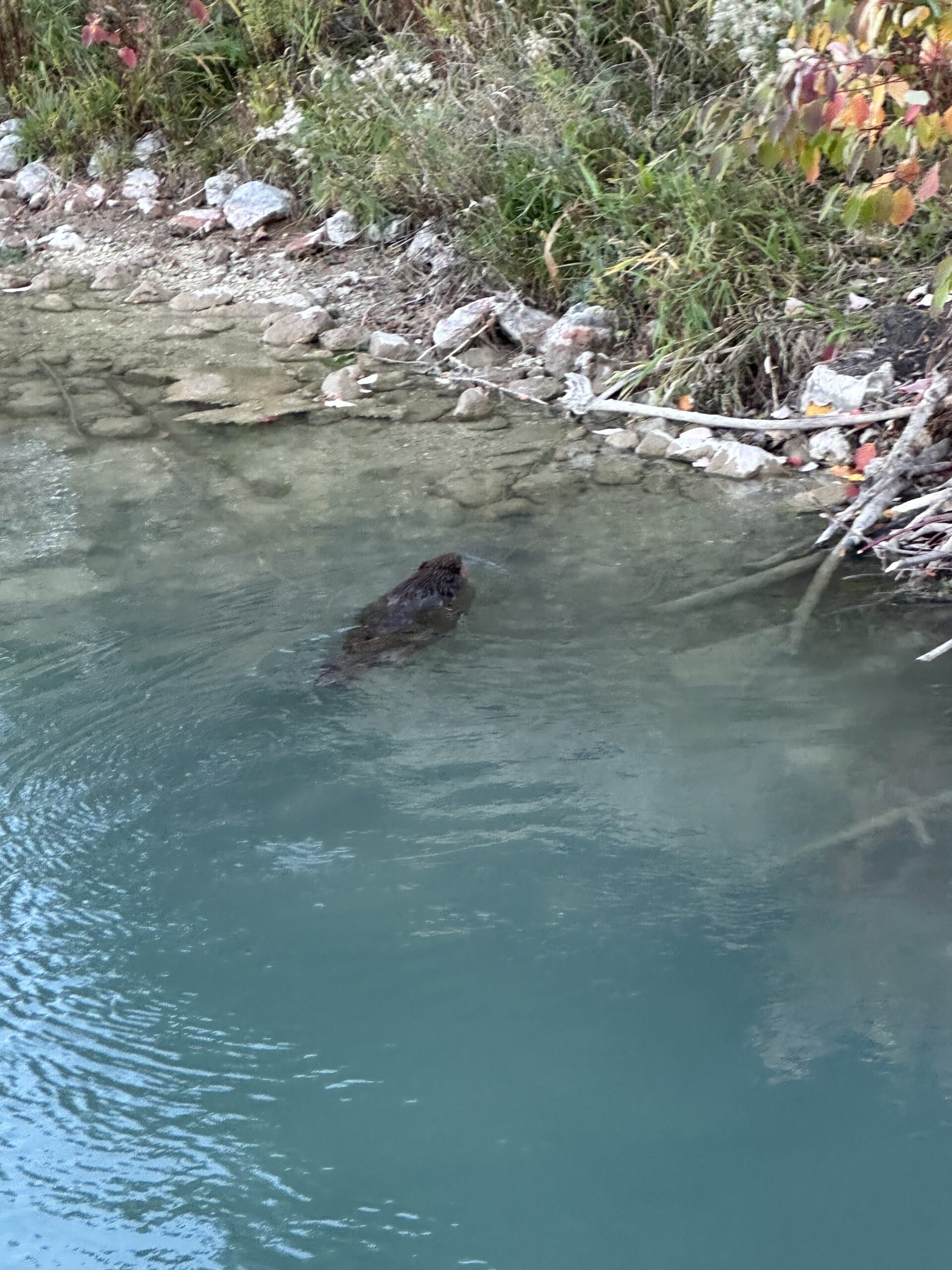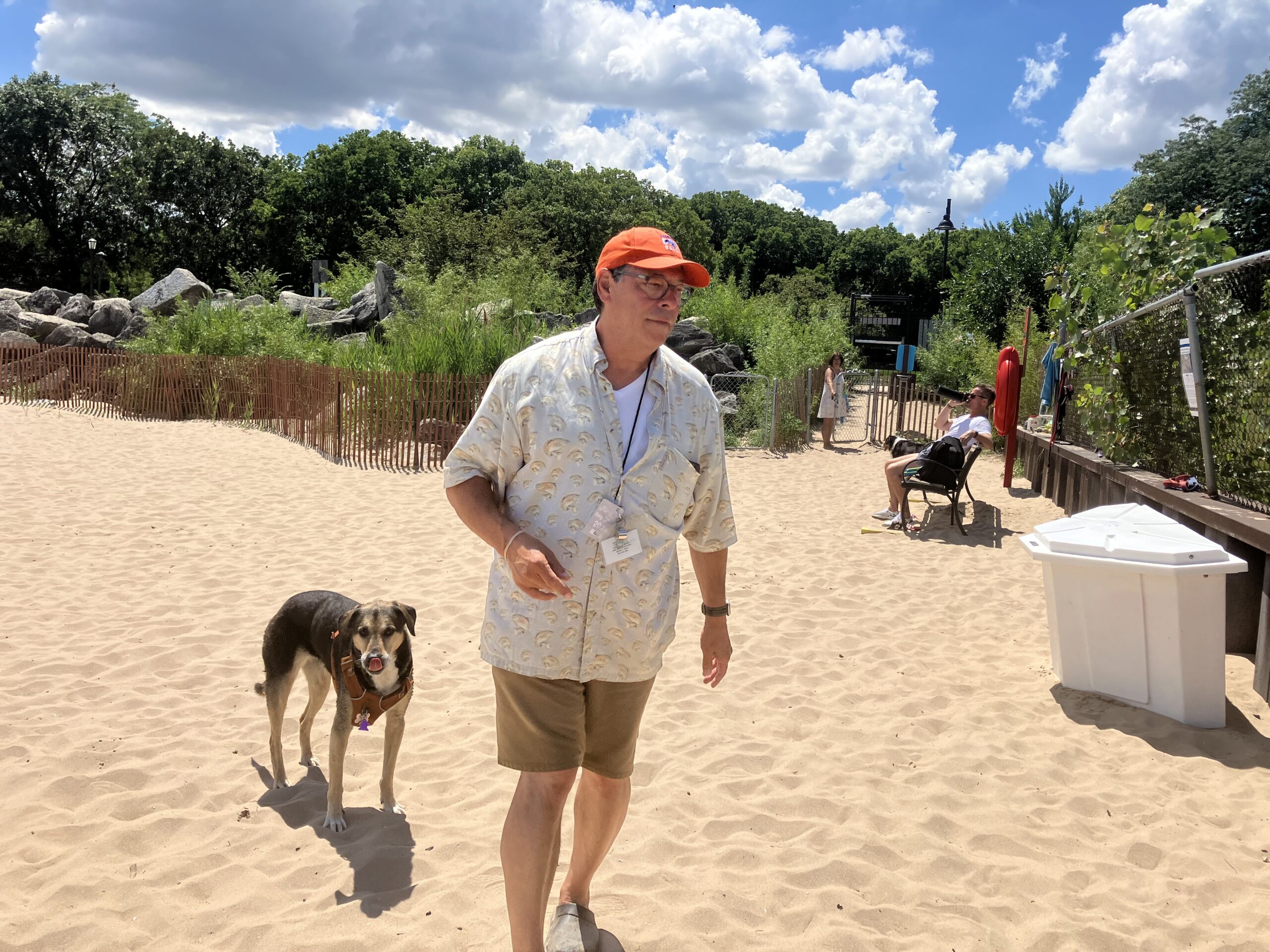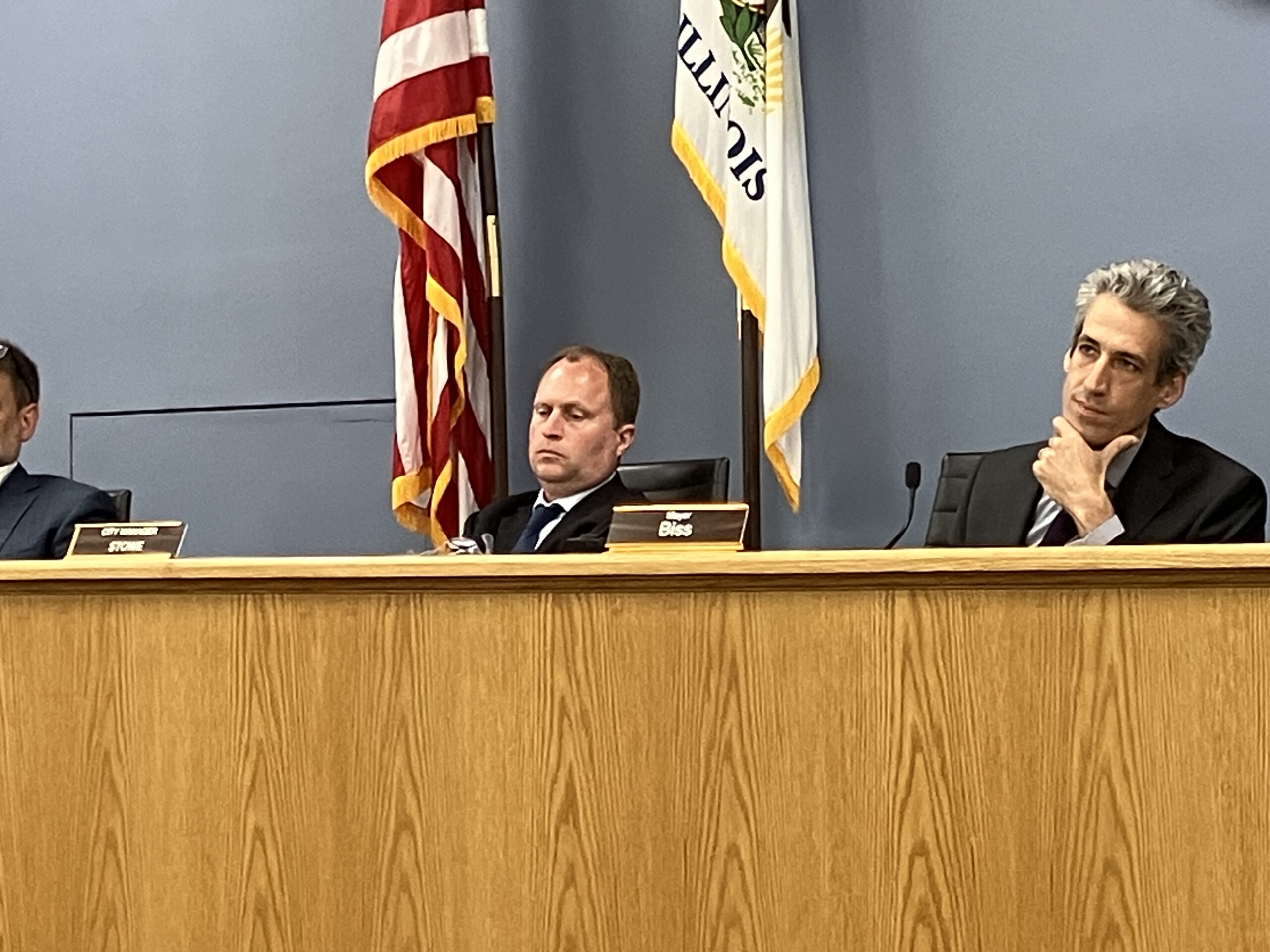Update: After the RoundTable posted the story below about a beaver sighting at Northwestern University’s lagoon on Nov. 12, another resident reported in an email that he had seen a beaver at the lagoon earlier, on April 10. Kyle Campbell, a local environmentalist and Third Ward resident, said he was out for a unicycle ride that day and was traveling next to Northwestern’s music building, the Ryan Center for the Musical Arts, when he noticed the beaver when he looked south.
By Bob Seidenberg
Beavers appear to have returned to Northwestern University’s lagoon.
Longtime Evanston resident Geri Joy discovered recently during one of her morning walks Nov. 12 by the bridge that runs over the lagoon and connects the campus to the lakefront. She captured the moment on her phone and even had the presence of mind to shoot a short video, which she later posted on Facebook.
“He did that little somersault for me,” she said, talking about the beaver sighting later. “He was quite the performer.”
Joy’s was the first documented sighting of a beaver in the lagoon since three beavers were found dead in that body of water on July 17, 2021.
At the time, community members told the RoundTable they were heartbroken over the deaths, with some saying the university should have worked with the county more rapidly to get a necropsy (autopsy for animals), which might have determined the cause.
A Northwestern spokesperson said at the time that the university would have a plan if such a situation arose again. Some community members also raised concern about the quality of the water in the deeper areas of the lagoon, saying the university should test the water.
Recent sighting
“I saw this long brown thing that I thought was a log until I watched it and realized it was the beaver,” she said.
Joy, retired from the Allstate Insurance Company and a resident of Evanston since 1972, had her phone with her.
“I take pictures every morning when I walk, but I don’t usually see beavers,” she said.
“I’m not quite sure where it came from,” she said of the beaver. “It’s probably two and a half miles there from the canal.”

As she was trying to catch the beaver in action, “I noticed somebody on the railing of the bridge had written, ‘Fun Fact: There’s a beaver,’ and I was standing by that little note as I took my picture.”
She remembered seeing beavers in the area 20 years ago, and Northwestern putting up a metal mesh around all their trees after the animals had gnawed a very mature willow tree to a stump.
Until the most recent sighting, she thought the creatures were all gone.
“The other day, I called Northwestern facilities and asked if they knew they were back,” she said. “And the guy who answered the phone said he didn’t know anything about that but that he’d get the message to the people that take care of the grounds.”
The university didn’t immediately respond to an email inquiring what the school’s policies are regarding the apparent return of at least one beaver.
Growing interest
Beavers might take one of a number of paths that end up at the lagoon, said Chris Anchor, wildlife specialist for Cook County. Anchor said he had offered to help arrange the necropsy after the dead beavers were discovered in 2021, but the bodies had not been preserved in ice and were too degraded for the procedure.
“It’s an inbred behavior for them to move along waterways in search of their own territories,” he explained. “So they live in family groups and then at some point, generally at a year and half, two years old, they get pushed out of the family.”
In search of a new home, “they’re going to go to the nearest waterway,” he said, which often can be Lake Michigan.
“So they’re just going to start moving up or moving down the lake until they find an unoccupied habitat.”
He said the lagoon previously fit that “paradigm of three siblings getting pushed out of a family group and spending time together until they get established.”
Beavers’ shredding of trees previously garnered attention after one such situation played out at the Chicago Park District’s Jackson Park, where some specimen trees donated by a Japanese ambassador became their target, Anchor said.
He said recent research has shown the role they play in increasing climate resilience, improving water quality, increasing biodiversity and creating floodwater storage capacity.
Two authors have explored their contributions and rich history in recent books that have won acclaim: Eager: The Surprising, Secret Life of Beavers and Why They Matterby Ben Goldfarb and Beaverland: How One Weird Rodent Made America by Leila Philip.
Both Goldfarb and Philip were presenters in September in a virtual summit presented by the Illinois Beaver Alliance that drew more than 700 people.
“The summit is a first step toward putting together a network of Midwestern stakeholders to spread the word about the incredible ecological importance of beavers and the modern tools for managing human-beaver conflicts nonlethally,” said Margaret Frisbie, executive director of the Friends of the Chicago River, which co-hosted the summit. “Beavers deserve our support, protection, attention and respect, which are all the more important today in the face of the climate crisis and biodiversity loss.”
‘Beavers are really incredible’
“Beavers are the original nature-based solution,” said Northwestern University graduate Rachel Schick Siegel, who formed a nonprofit group called the Illinois Beaver Alliance, which advocates for beavers and educates the public about the ecosystem they represent. “They purify water and they cull out the phosphorus and nitrogen, which, of course, in our agricultural state is a big deal.”
She and other neighbors formed a Glenview Beavers Fan Club a few years ago after beavers found living in a retention pond were threatened. She said steps can be taken to protect specimen trees in areas where beavers lodge by planting willow and dogwood trees in the area, “so that you give them a decoy.”
“Beavers are really incredible,” she said. “They are so adaptable. They don’t have to migrate seasonally to find food because they store their own food cache. … In Colorado, the beavers were cleaning mine runoff out of an abandoned mine.”




